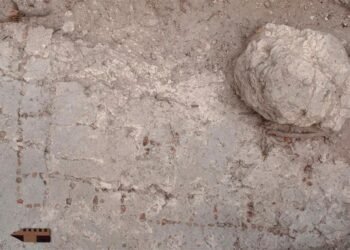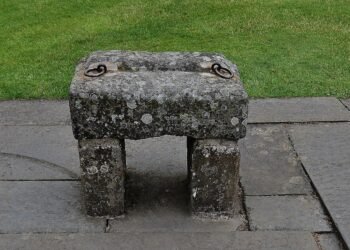The rudder of a sunken warship, HMS Invincible, that went down in the Solent in 1758, has been found on the seabed, approximately 60 meters (200 feet) from the main shipwreck, according to a report by BBC News.
HMS Invincible, originally constructed by the French in 1744 and later captured by the British in 1747, is considered a highly significant warship of its era. This 74-gun ship met its demise when its rudder became jammed, causing it to run aground on a sandbank between Langstone Harbour and the Isle of Wight.
The ship capsized three days later, though fortunately, no lives were lost in the incident. The discovery of the 11-meter-long intact rudder was made during a routine inspection of the site near Portsmouth.
Marine archaeologist Dan Pascoe expressed the uniqueness and importance of the find, stating that they were not specifically searching for it but that it became evident through geophysical surveys, appearing 60 meters behind the ship’s stern. He highlighted the rudder’s significance, being the final piece needed to complete the story of HMS Invincible.
Mr. Pascoe emphasized the critical role of the rudder in the ship’s design, given the ship’s high maneuverability, making this discovery a crucial addition to understanding the vessel. The rudder, buried in the seabed, was preserved and is considered an extremely rare artifact from warships of this era.
To protect the rudder from erosion due to underwater elements, it will be shielded with sandbags. However, the process of bringing it to the surface and conserving it could potentially incur expenses of up to £80,000, estimated by Mr. Pascoe.
He noted that this find is truly unique, with no other examples known from warships of this period. Its future, including whether it will be raised and displayed, depends on its financial viability.
In 2017, a substantial excavation project was initiated by Poole’s Maritime Archaeology Sea Trust (MAST) and experts from Bournemouth University at the wreck site. This endeavor has yielded various artifacts, including a gunpowder barrel, swivel guns, a sealed bottle of rum, and woodworking tools, many of which have been showcased at the National Museum of the Royal Navy in Portsmouth.























